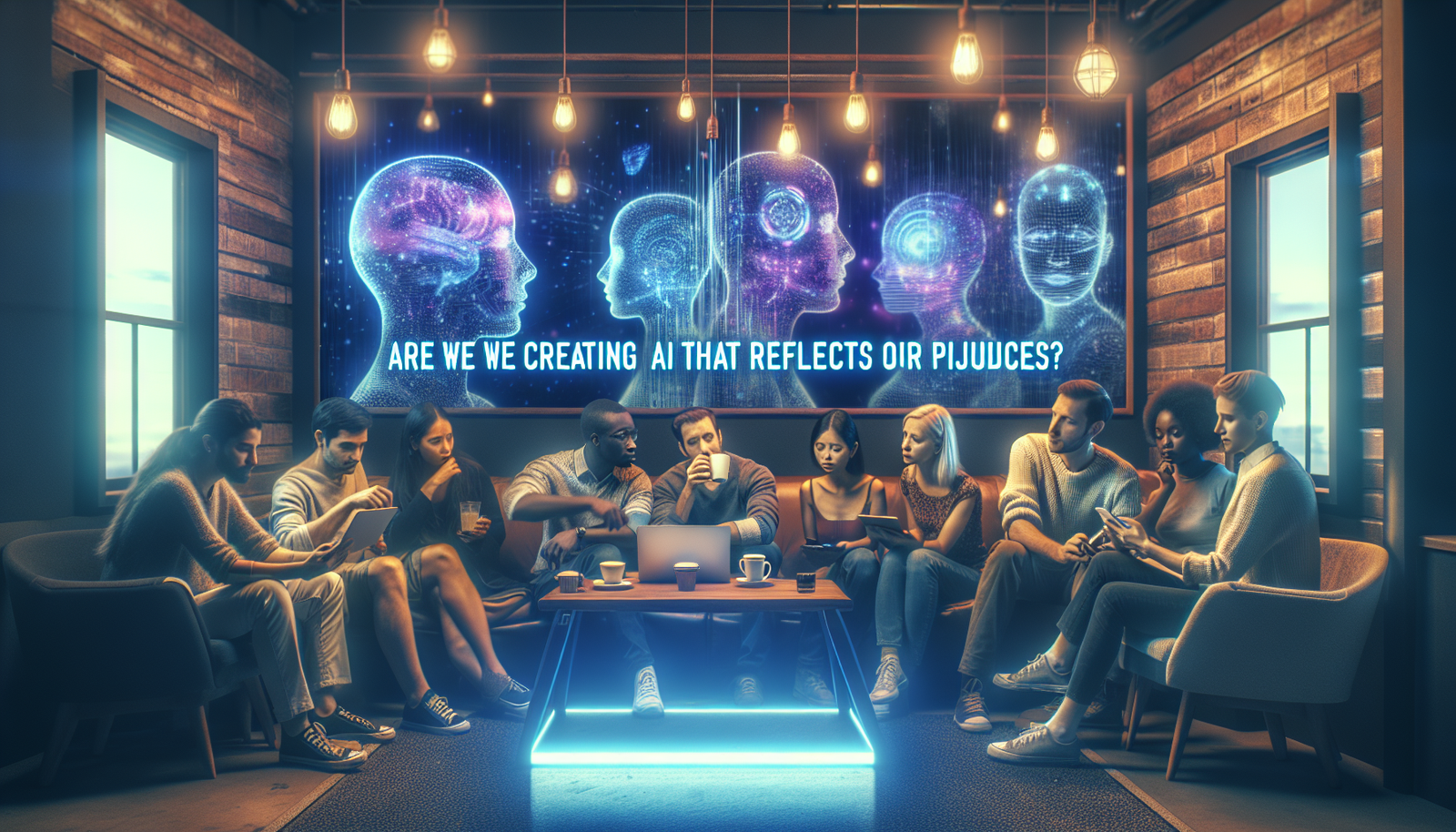The interaction between artificial intelligence and human biases reveals insidious dynamics. A recent study highlights how AI systems, fed by biased data, exacerbate our own prejudices, thereby influencing our perception of the world. *Far from being neutral*, these algorithms amplify existing biases, creating a vicious cycle where human errors reinforce each other. *The consequences* of this amplification go well beyond simple judgments, affecting vital decisions in various fields. *Rethinking AI design* becomes imperative to counter this drift and promote a more equitable society.
Human biases in AI systems
A recent study conducted by researchers at UCL sheds light on the phenomenon of bias amplification by artificial intelligence (AI) systems. AI algorithms, trained on human-generated data, inevitably integrate the biases present in this data. This dynamic results in a vicious cycle where human prejudices are not only replicated but also amplified by AI.
A revealing feedback effect
Researchers found evidence of a feedback loop between human biases and those in AI. According to the study published in Nature Human Behaviour, initial biases can lead to increased human errors, a phenomenon of mutual reinforcement. Interactions with biased systems make people more likely to share these prejudices, thus exacerbating discrimination.
The consequences in the real world
The results of this research demonstrate that users of biased AI tend to underestimate the performance of women while overestimating that of white men regarding high-responsibility positions. Thus, AI does not just replicate prejudices but actively contributes to shaping social perceptions.
The bias embedded in algorithms
Professor Tali Sharot, a co-author of the study, explains that as soon as AI systems are trained on biased data, they learn these same biases and amplify them in their predictions. During the experiment, an AI algorithm demonstrated a clear ability to reproduce a trend of judging faces as sad, thereby influencing the judgments of a group of participants.
Experiments and bias amplification
Researchers conducted several experiments involving more than 1,200 participants. In one of them, participants had to evaluate faces on a satisfaction scale. Shortly after, a group exposed to the biased judgments of AI demonstrated an even greater tendency to perceive faces as sad. A reinforcement effect manifests, where participants align with the biased reputations of AI.
Impact of context and human interactions
Biases are sublimated when participants believe they are interacting with a person rather than an AI system. This finding underscores that expectations influence how users integrate machine judgments. Cognitive alienation towards AI systems makes their biased judgments seem more legitimate.
The implications of generative AI
The study also examines the influence of generative AI systems, such as Stable Diffusion. The results show a predominance of representation of financial candidates based on stereotypes. Participants became more inclined to identify white men as candidates for management positions after being exposed to biased images created by AI.
Toward a more ethical artificial intelligence
Researchers emphasize the urgent need to design less biased and more accurate AI systems. Even though they found that interaction with accurate AIs can improve judgments, the devastating impact of biases will require substantial effort in design and implementation.
Algorithm designers must be aware of their responsibilities. Thoughtful development of AI systems could potentially mitigate the harmful effects of bias. By adapting training methodology, it is possible to reduce their impact on society.
The study reinforced the need for heightened vigilance regarding biases in the algorithms that shape our daily lives. The consequences of this dynamic foreshadow an urgent need for ethics in future technological development.
For more in-depth information: The AI revolution is transforming our world | AI as a growth lever | Mitigating biases in AI models | Skin conductance in emotional analysis | Role of AI and ethical considerations
Frequently asked questions about biases in artificial intelligence
What is bias in artificial intelligence?
Bias in artificial intelligence refers to prejudices or errors that may be embedded in algorithms and AI models due to the data on which they are trained. These biases can influence decisions made by AI, thereby reflecting human prejudices.
How can biases in AI systems affect our own perceptions?
Biases present in AI systems can exacerbate our prejudices by influencing how we interact with information or individuals. When users interact with biased AIs, they may internalize these prejudices, leading to an amplification of their own biases.
What are the concrete impacts of biases in AI in everyday life?
Biases in AI can affect various spheres of everyday life, including recruitment, criminal justice, and the selection of candidates for valuable positions. For example, a biased algorithm may lead to discrimination in hiring by favoring certain groups over others.
What measures can be taken to reduce biases in AI systems?
To reduce biases in AI systems, it is crucial to use diverse and representative data sets when training algorithms. Regular audits of algorithms and training on bias awareness can also be beneficial.
How do researchers study the impact of biases in AI?
Researchers study the impact of biases in AI through controlled experiments where participants interact with biased AI systems. These studies reveal how AI biases influence human judgments and behaviors through observation of participants’ responses and attitudes.
What is the responsibility of AI developers regarding biases?
AI developers have the responsibility to design algorithms that are as impartial and accurate as possible. This includes thorough testing to identify potential biases and adjusting models to minimize their impact on users.
Are biases in AI always intentional?
No, biases in AI are not always intentional. They can result from misunderstandings in the data collection process or uneven representation in data sets, rather than a deliberate intention to discriminate.
How can biases in artificial intelligences be detected?
Biases in AI can be detected through the analysis of the results provided by the systems and their comparison with standards of fairness. Tests involving different demographic groups can also help reveal embedded prejudices.






